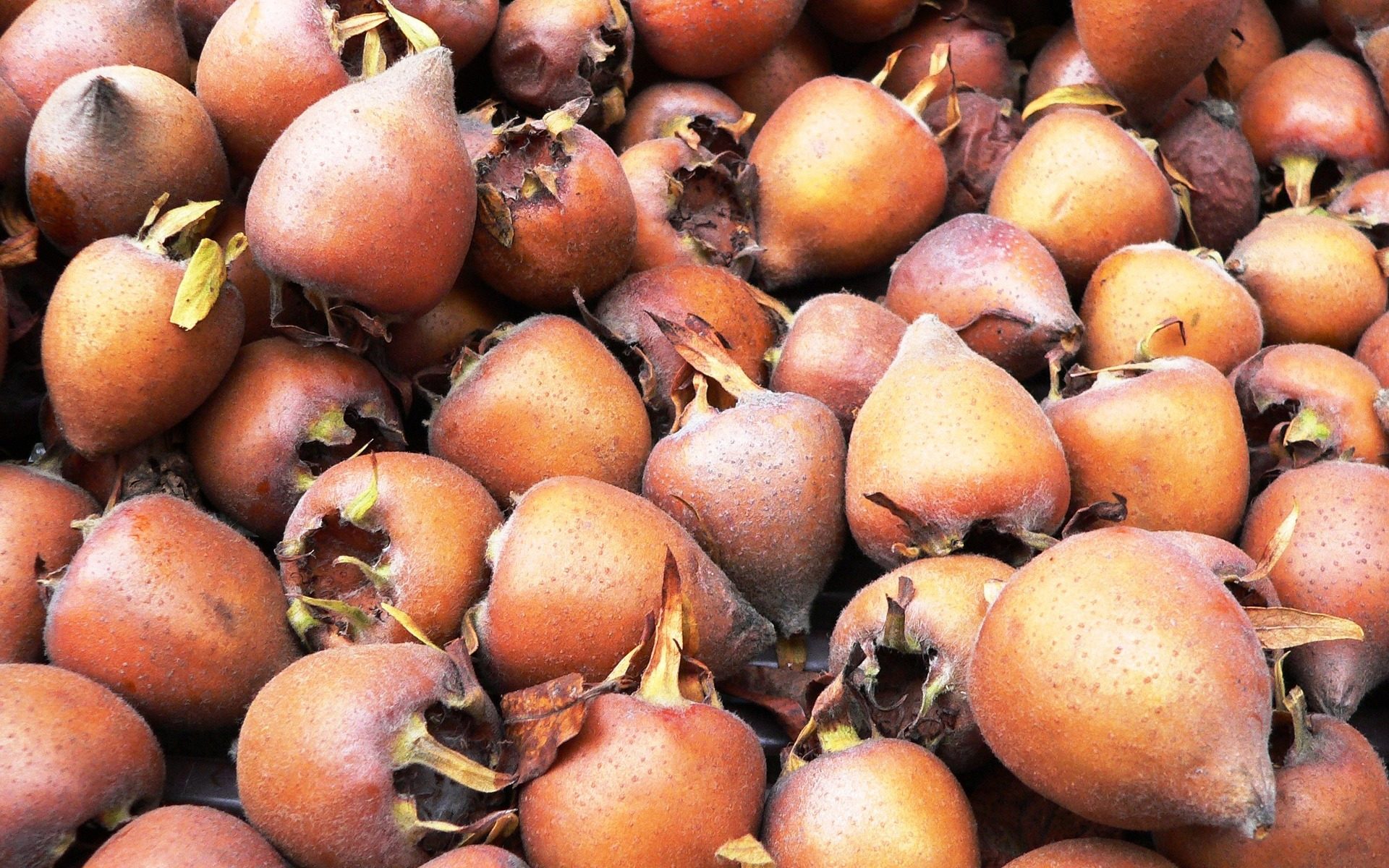The medlar tree is a typical hobby culture, but some farmers set aside some part and for the market.
Medlar fruit contain about 26 – 28 % dry matter, including sugars, organic acids, tannin and quite a lot of pectin (about 1.2%), potassium salts and a number of trace elements – vanadium, zinc, iron, etc.
The medlar neutralizes acid in meat, fish, eggs, fats, bread, walnuts and other foods. It is used for the strengthening of the guts and for treatment of different gastric disorders, against stones in urinal roads and for pain relief in kidney crises.
The pectin participates in connection and disposal of certain heavy metals such as lead, mercury, etc. From the leaves harvested during the flowering stage and dried, tea is prepared for stomach disorders, for gargling the throat when with angina, and other.
At the time of harvesting fruit are quite solid and bitter, but after a period of storing or frosts, they become sweet and pleasant. They are used for the preparation of jams, drinks of the type of the cider, liqueurs, nectars, etc.
Biological and botanical features
The medlar is a modest tree with a height of 2 to 4 m. It forms a wide spilled crown. Fruit are flattened, rounded to back cone with a diameter of 1.5 to7 cm. It is sustainable to the cold, blossoms late, after or simultaneously with the quince. Fruit production is on multiannual twigs. It can be grown anywhere in the country. It is not demanding to soil conditions.
Varieties
In the country are grown forms with medium large or large fruit.
Cultivation
It is propagated by grafting on quince or wild briar. The distance of planting is 4 x 3 m. It is possible to create single species plantations. The trees are formed low stemmed. As they give fruit on two-year-old twigs situated on the periphery of the crown cutting shall be carried out in 3 years to stimulate the formation of new branches. Fruit is harvested later in the autumn and can be stored at 15’C till they ripen and get tender.
The medlar is attacked, though rarely by the disease of mummifying the blossoms and young fruit, rust and brown rot. The caterpillars of the white fruit butterfly, aphids and shielded scale sometimes also attack the plants.
